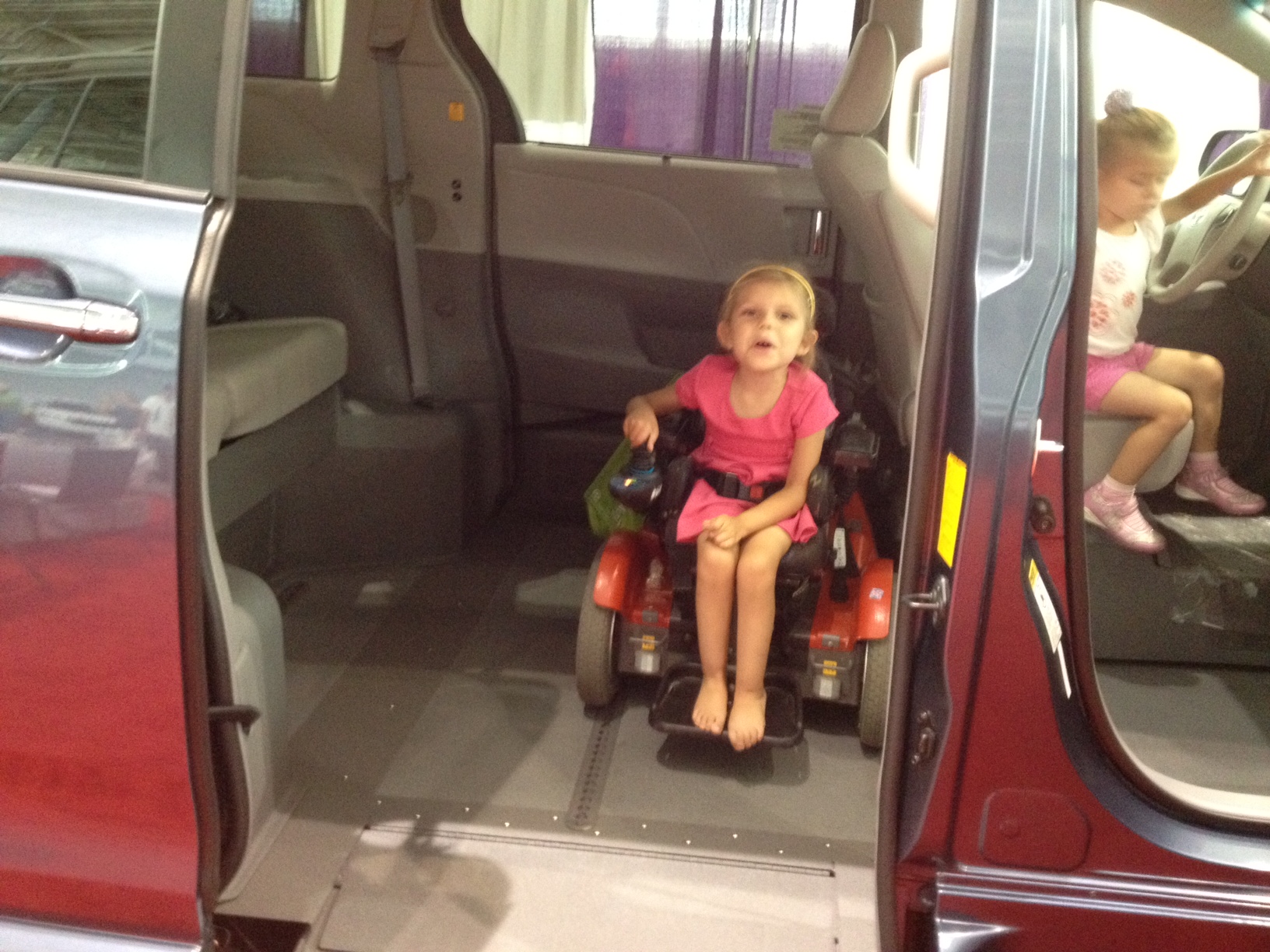
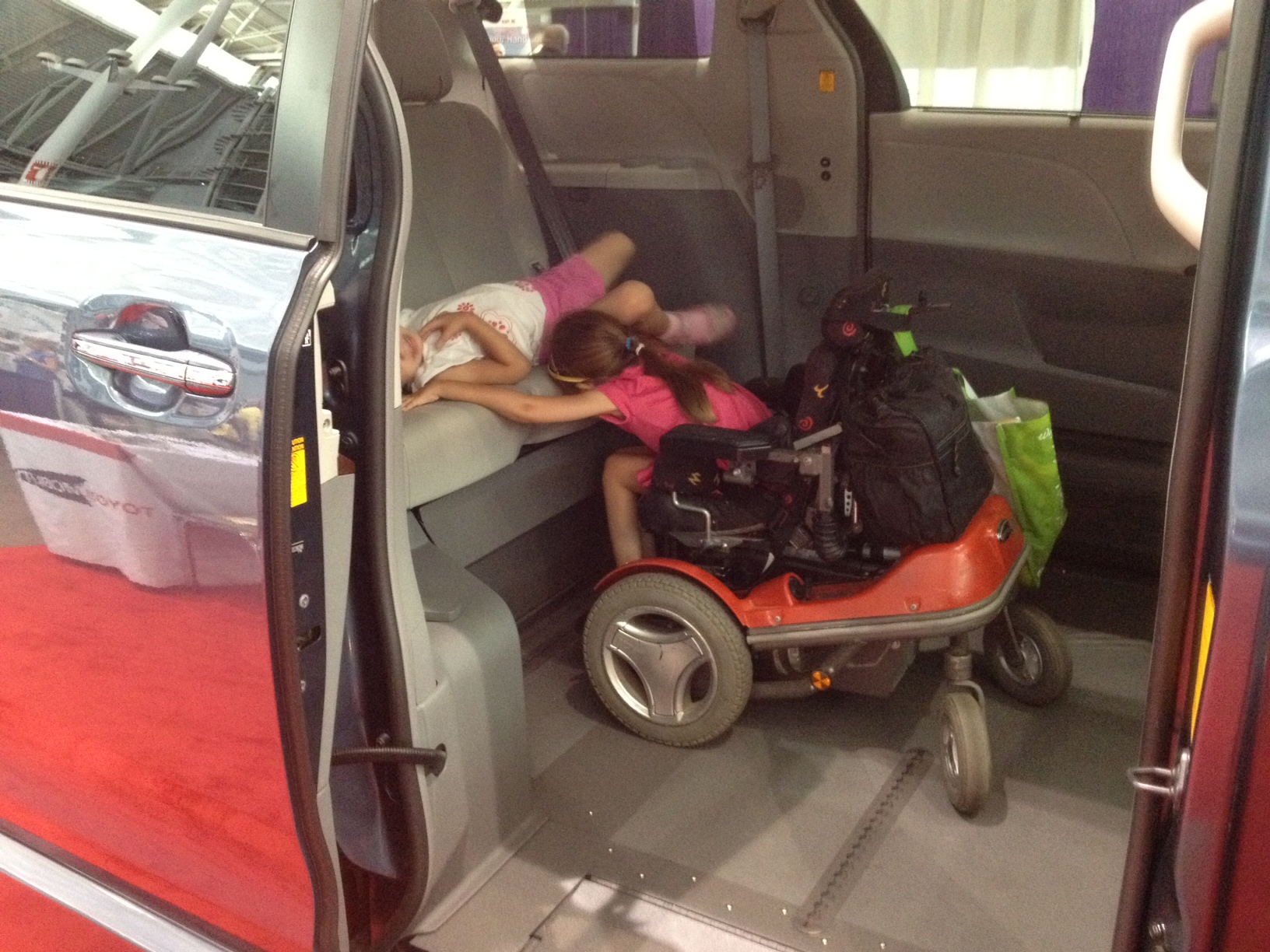


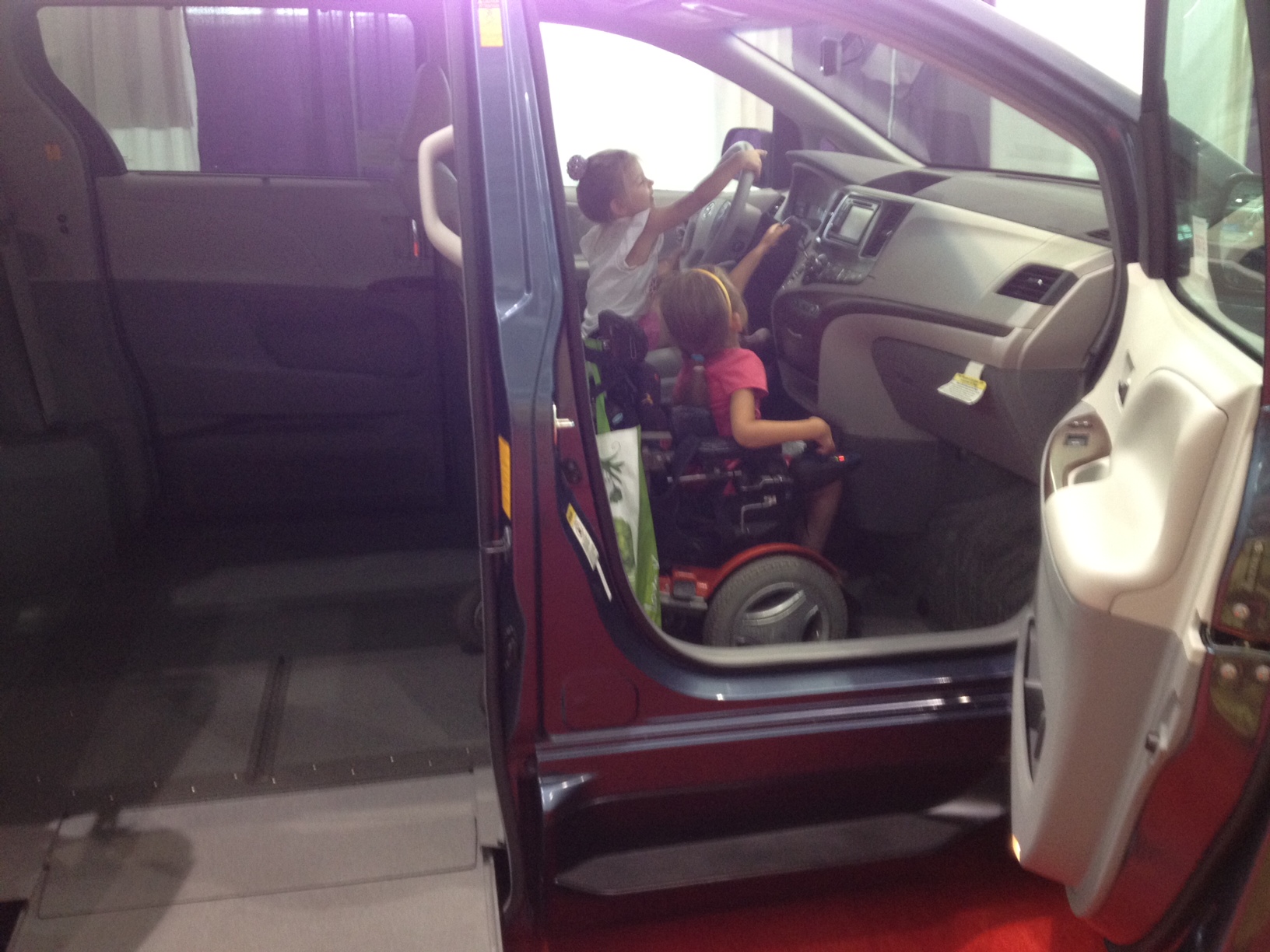
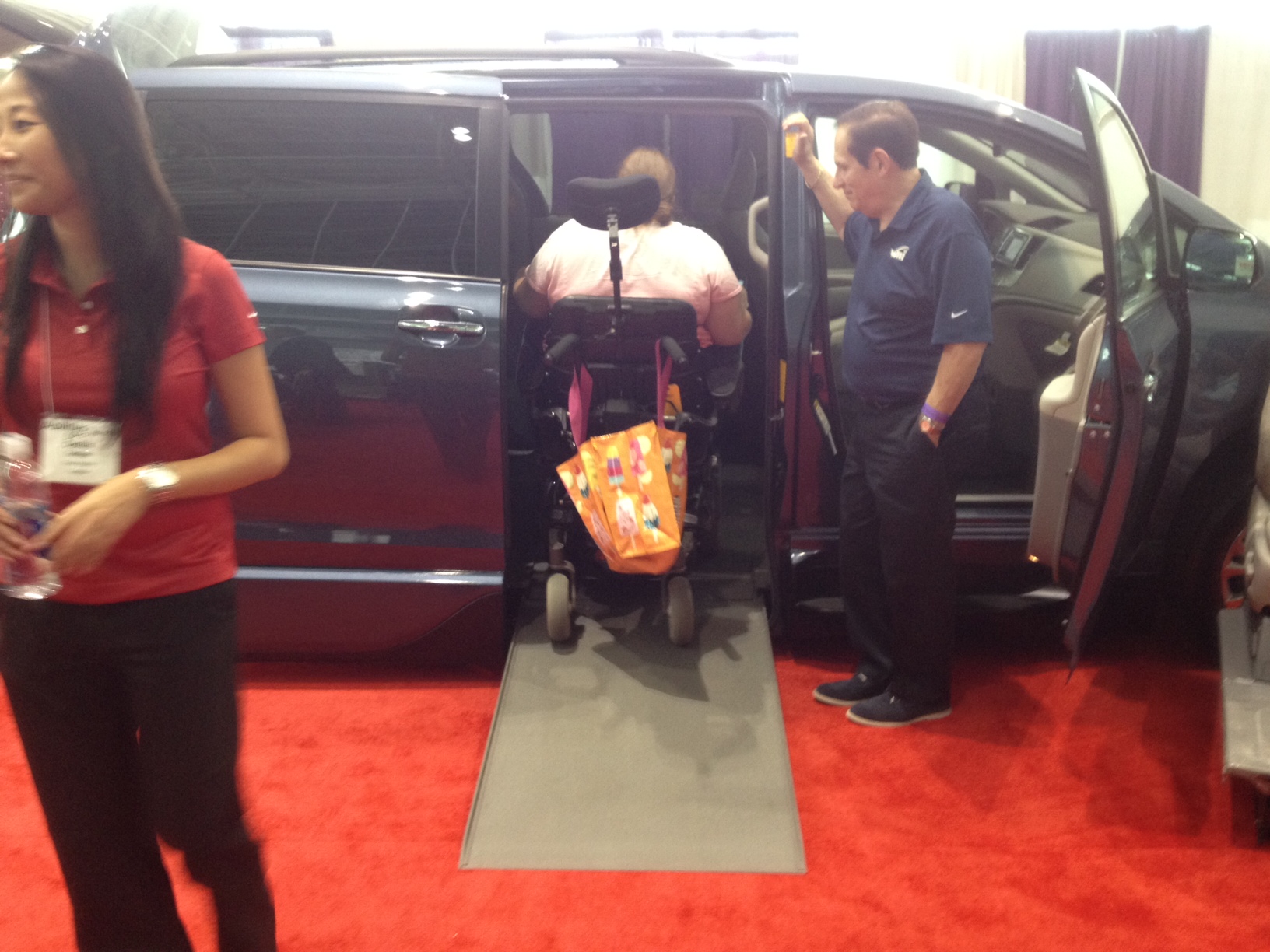
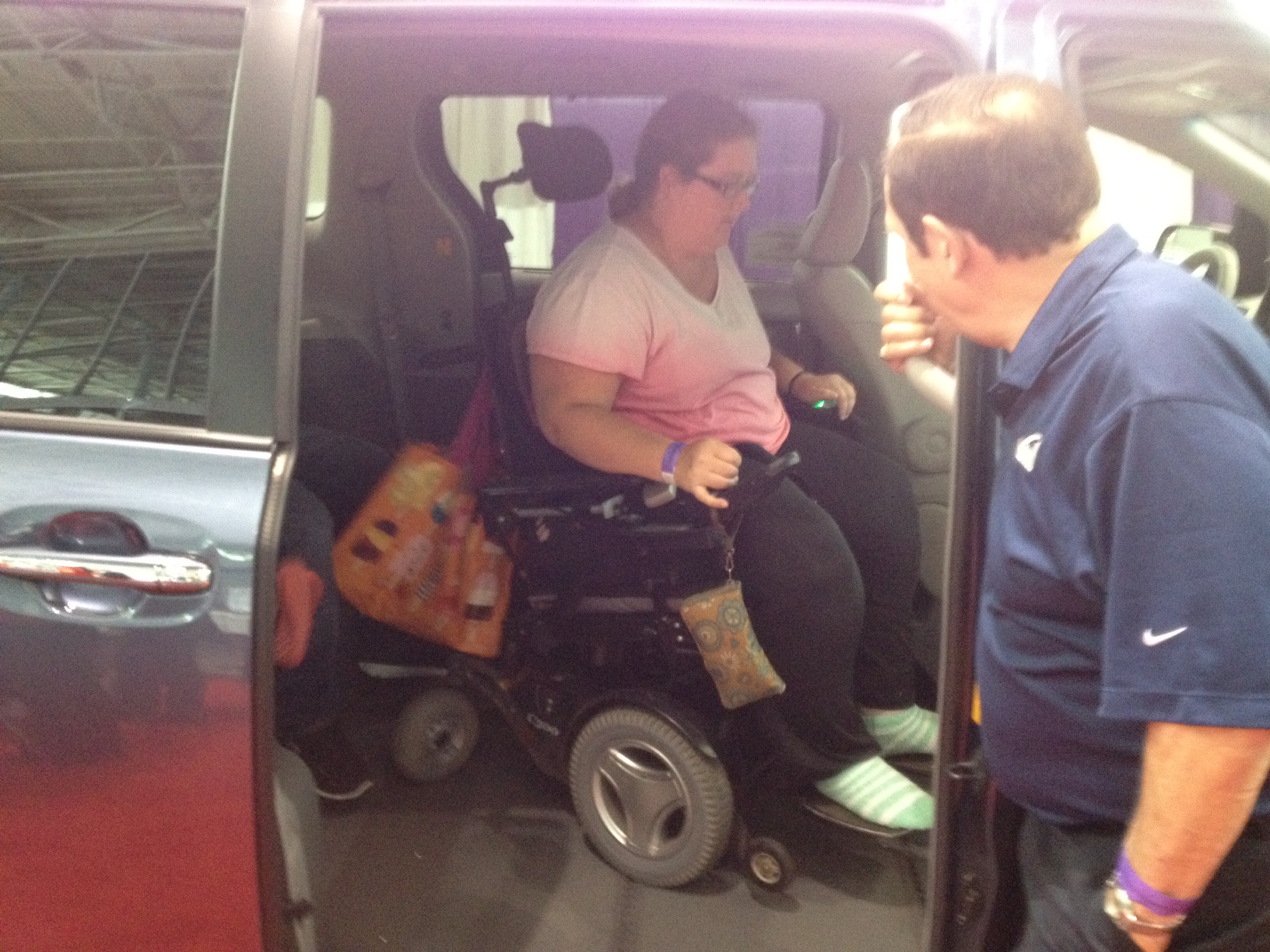
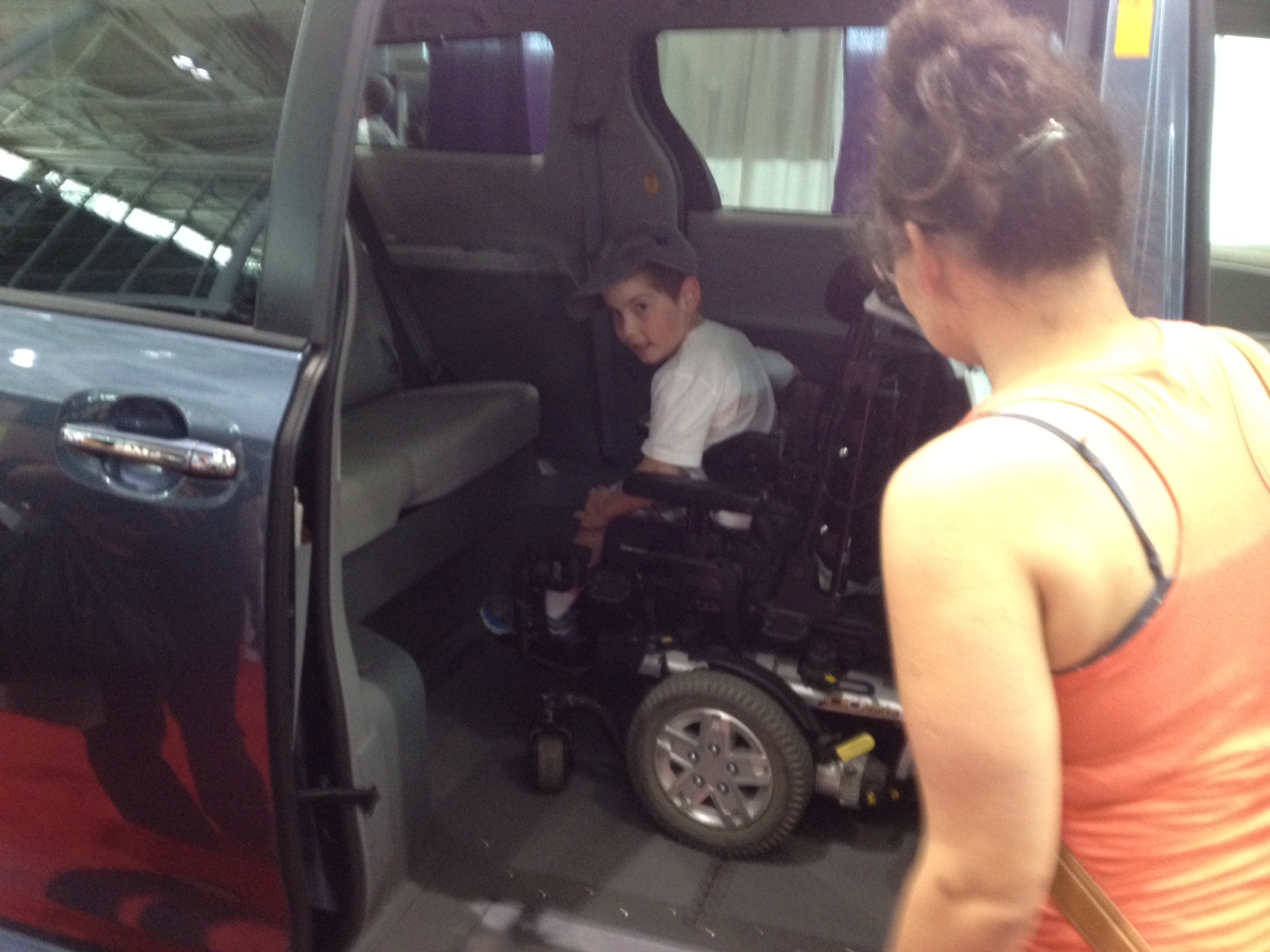
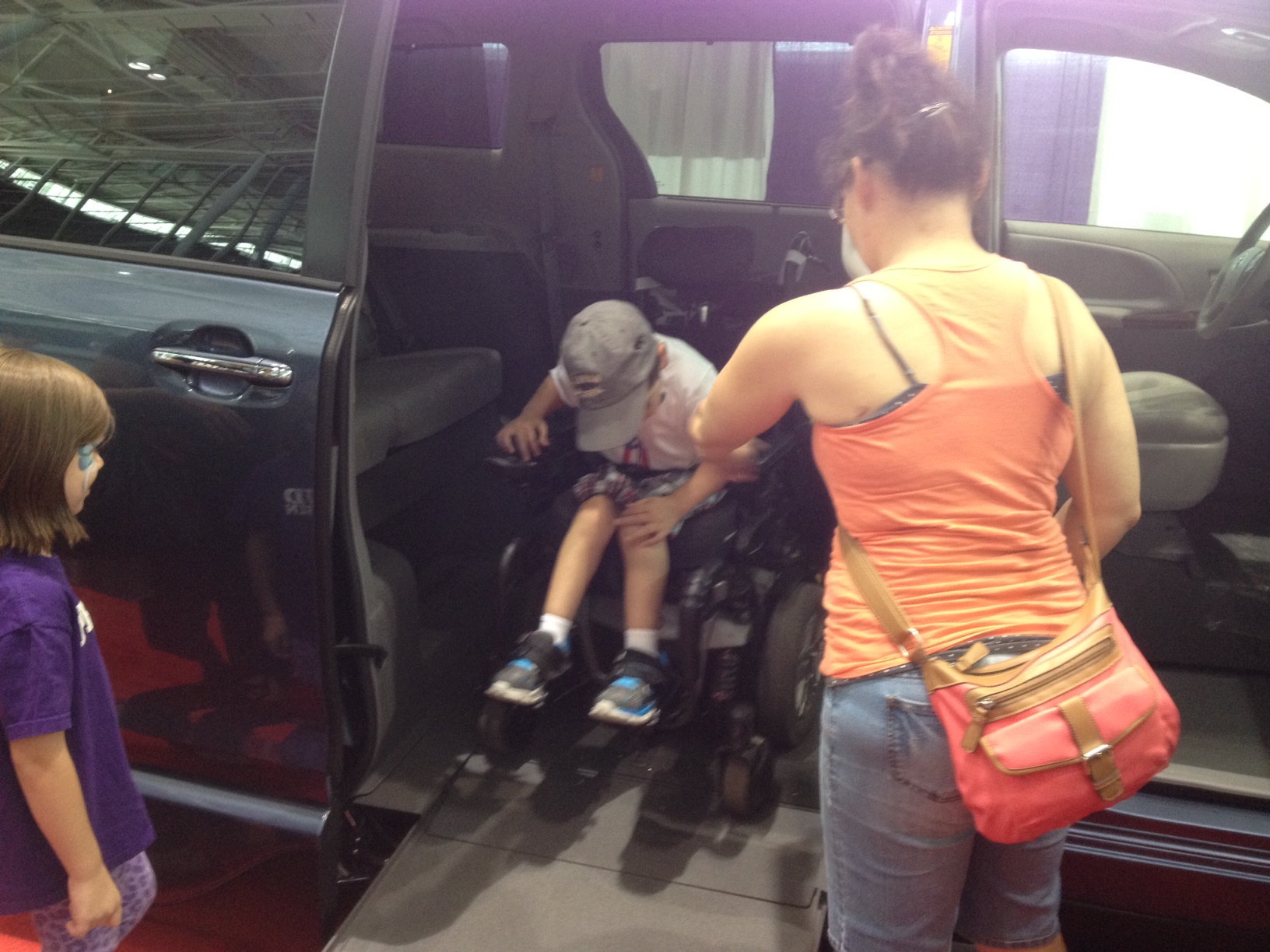


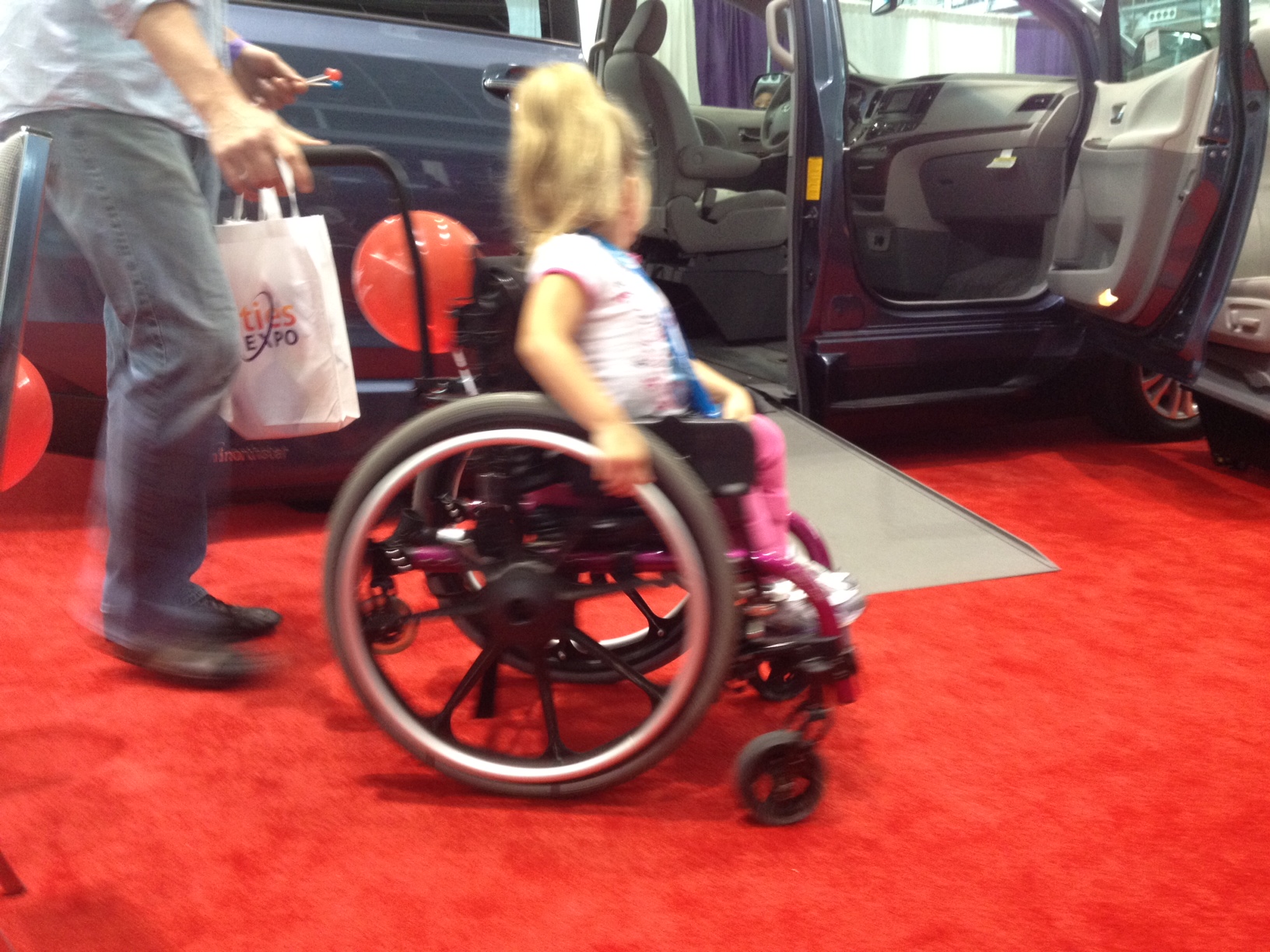

Tag Archives: wheelchair vans
The Benefits of Owning a Wheelchair Van
Even though wheelchair-accessible minivans can offer greater independence, many wheelchair users are afraid to switch from their car to a mobility vehicle. For some, a car is more fun and the idea of driving a minivan is not all that appealing. Cars also offer a bit of a challenge and are generally less expensive than wheelchair vans, so there is often hesitation to make the change.
Unfortunately, wheelchair users and their caretakers usually have to deal with the hassles of transfers and chair loading when they use a car to get around. This can cause back or shoulder pain for those having to make the transfer and after a while, this can be quite physically taxing.
For those dealing with these daily struggles or those who want to prevent them, switching to a wheelchair-accessible van becomes an easy choice. Take a look at the following benefits and see why you might want to buy a wheelchair van.
Reduced Pain and Fatigue
When a car is the main vehicle used to transport someone in a wheelchair, pain and fatigue can be a serious problem caused by frequent seat transfers. It’s hard to get close enough to a car to make a smooth transfer and if the height of the car seat doesn’t match that of the wheelchair, it can put a lot of stress on the shoulders, back and neck. What could result is joint and muscle pain and eventually arthritis and tendinitis. If getting into your vehicle is too much work or too painful, you might give up doing the things you love to do after a while.
Fortunately, a wheelchair-accessible van can give you your freedom back so you can do all of your favorite things. Because a wheelchair van uses a ramp for entry, there are no transfers from outside of the vehicle and you don’t have to separately load your chair. Once inside the vehicle, the transfer from your wheelchair to the driver or passenger position is much easier since you can pull right up to the seat. Plus, some wheelchair vans even let you drive or sit in the front from your wheelchair, completely removing any need to transfer.
Greater Freedom and Independence
While many people may argue driving a minivan isn’t the “coolest” thing you can do, sometimes other things are more important than image. A mobility van may not always be sporty, fun or stylish, but it offers maximum freedom and independence. Actually getting where you need to go without too much assistance or a physical struggle is more important than how you are able to do it.
Helpful Financing Options
A converted van will most likely cost several thousand dollars more than a standard car, as the conversion price plus higher fuel and insurance costs increase your total spend. While this might deter many people from making the switch to a van, it’s important to consider what you get for the price – greater health, happiness and overall well-being.
Even though a wheelchair-accessible van may seem out of reach, there are programs available that can help you pay for a mobility vehicle. Government programs like Worker’s Compensation, Medicaid Waivers, Vocational Rehabilitation and those with the VA may all be able to help with funding. There are also charities or nonprofits that may be able to help provide fund raising opportunities and some banks or Independent Living Centers offer extended loans or lower interest rates. Used vehicles are an option as well, as many dealers sell old rental vans after a year of use.
People will always have a reason to avoid buying a mobility van, but it might be worth serious consideration. Think about your quality of life and whether easier mobility may improve it. If so, it might be time to make the change.
How to Choose the Right Mobility Vehicle for You
With several mobility vehicle options available, how do you know which one is going to be the best fit for you?
Most vehicles can be modified with hand controls, foot pedals and adaptive equipment to make driving easier for someone who has limited mobility. While those modifications help you drive, they don’t actually help you get into the vehicle. Picking the right mobility vehicle should start with entry.
When you use a wheelchair to get around, it’s important you have a vehicle that allows you to get in and out in the most convenient way possible. If you have good upper-body strength and can’t stand the thought of driving a van, you may be able to get by using a sedan or coupe – at least for a little while. If you use a large power chair that won’t fit in the back seat of a car or have no one to help you get it there even if it could, a full-size or minivan might be more appropriate.
To find out the differences between mobility vehicles so you can pick the right one for you, consider the benefits and disadvantages of each type below.
Sedans and Coupes
Having a sedan or coupe usually means you have to transfer from your wheelchair to the car seat, which can put a lot of strain on your arms and shoulders – or those of your caregiver. When you think about a long-term solution, having to transfer and load a wheelchair for many years may not be practical. Not only that, but if the weather isn’t ideal (snow, rain, excessive heat), this all becomes even more difficult. Standard cars can have motorized lifts or platforms attached to them, but those are generally just for loading a wheelchair in the back or trunk and don’t help with your transfer.
While cars might not be the most practical solution for all wheelchair users, many people still choose them because they are more stylish than a van and tend to be less expensive. The cost of the vehicle with gas is generally less on an unconverted sedan or coupe than a converted van. Plus, if you already own a car, getting assistive equipment is cheaper than buying a brand new mobility vehicle.
SUVs
SUVs are similar to sedans and coupes in that they usually require a transfer from the wheelchair to the car seat. That means they don’t work for wheelchair users without much upper-body strength or strong caregivers, especially since SUVs sit higher and the transfer involves more lifting. SUVs also don’t have a lot of interior space and may not fit larger wheelchairs – even in the trunk.
One of the major benefits of having an accessible SUV is the All-Wheel Drive feature, which makes driving in inclement weather a little bit safer, especially when hand controls are used.
Minivans
Wheelchair-accessible minivans are one of the most practical options for someone with limited mobility. Converted minivans usually come with a ramp system and automatic sliding door to make entry and exit into the vehicle easy – without having to leave your wheelchair. This makes getting in and out much quicker and puts almost no stress on the body of the wheelchair user or caregiver. In addition, some wheelchair-accessible minivans offer different seating options so you can sit in the front and avoid feeling like cargo.
Converted minivans are one of the most convenient options, as they are large enough to fit a wheelchair user, but not so large they may be hard to drive and park for if you have limited mobility. While these might be the perfect solution for many wheelchair users, some people don’t like the idea of driving a minivan and you always have to park with enough space on the side to lower the ramp.
Full-Size Vans
Full-size mobility vans are a great option for larger wheelchair users or those in heavy power chairs. While these vehicles offer the most space, having a full-size van also usually means you use a lift, which takes up space inside the vehicle and may rattle around when you drive. Lift operation may also take longer than that of a ramp and often requires the assistance of another person. Having a lift, however, does make loading and unloading possible without having to transfer from the wheelchair.
While each type of mobility vehicle has its perks and drawbacks, it’s important to find the one that works best for you. It is critical to find a reliable wheelchair-accessible vehicle or adaptive equipment manufacturer so you get a product that will last. If you need additional assistance in determining which option is ideal for you, talk to an authorized mobility dealer and ask for a demo of the vehicles that interest you.
Teens with Disabilities: Learning to Drive A Handicap Accessible Vehicle
The majority of teenage kids will assert that learning to drive not only makes for an exciting experience but also marks a very important moment in life – moving a step closer towards achieving independence. Teens living with a disability are not exempt from this feeling. When it’s time to teach your child to drive, there are a few important things to keep in mind to ensure your child’s safety and the safety of others on the road.
Regardless of your age, preparedness is essential when it comes to driving. For those living with disabilities, the process of how you prepare can be slightly different, but it is certainly equally as important. Teens and new drivers with disabilities must complete a drivers’ assessment prior to beginning lessons in order to determine what sort of adaptive equipment or techniques he or she must use while driving. Steering aids, hand controls, or ramps/lifts may be necessary for your teen to be ready to get behind the wheel and recommendations will be made by the assessment administrator (most often by a certified driver rehabilitation specialist) after a proper exam.
While some teens will require little additional equipment in order to operate a vehicle, others may need more thorough vehicle conversions. If purchasing a new handicap accessible vehicle is not in your budget, there are used options available to suit your child’s needs, as well as rentals and loaners made available by some driving schools.
Qualified driving specialists will be able to relay information on your state’s driving laws for people with disabilities, how to operate the vehicle, as well as how to get in and out of the car without additional assistance, should they need to do so.
Throughout this journey towards adulthood, it’s vital that you remain your teen’s number one fan. A supporting and encouraging environment can dramatically improve your child’s outlook on taking on the road, raising their self-confidence and making them an overall better driver. Remember, learning how to drive takes time, but with your support, the expertise of driving coaches and the accessibility of a modified vehicle, your teen will be on his or her way to being a licensed driver!
Adaptive Q&A
With such a wide variety of adaptive vehicle equipment available, selecting the appropriate features or modifications can become big task. In an effort to facilitate this process, here are the responses to some of the most frequently asked mobility equipment questions.
Are ramps difficult to operate?
Most vans equipped with side-entry mobility equipment are fully automatic. The seamless loading and unloading process can be as simple as pushing a button. Vans can be converted to automatically open their doors, lower to the curb and deploy or stow a ramp without the driver or passengers needing to work with any equipment. Manual options are also available, however these are also very easy to use. Built with springs that carry most of the ramp’s weight, manual ramp options are also quick, safe and simple to use solutions.
Can I drive from my wheelchair?
In many cases, it is possible for drivers with disabilities and the need for a wheelchair to avoid transferring by properly securing their chair and themselves within the vehicle. With the use of both a wheelchair tie-down system and occupant restraints, driving from a wheelchair can be a safe and convenient option.
Can I drive from my scooter?
Operating or riding a vehicle from scooter is not recommended. In order to remain safe while traveling, passengers or drivers in scooters should always transfer into vehicle seating. Turning or swivel seats can make the transfer process easier and less demanding on those with limited mobility or access to caregiver assistance. Scooters should also be properly secured with a tie-down system to prevent movement in case of a sudden stop or turn.
Side entry vs. rear entry – which is best for me?
There are a few things to consider when deciding between a side entry and a rear entry vehicle. Passengers who are not going to be driving the vehicle typically use rear entry vehicles. Side entry vehicles work well for drivers and co-pilots getting in to the front of the vehicle, as well as passengers. Depending on the parking conditions of your regularly visited establishments, your vehicle’s entry points may need to be redefined. If you often need to parallel park or live in a region that experiences recurring inclement weather, a side-entry vehicle will prove to be a better option for your needs. These are only a few of the deciding factors when it comes to choosing between side and rear-entry.
Can someone else drive my vehicle if I install hand controls?
In most cases, both able-bodied drivers and those with disabilities can comfortably operate vehicles adapted with hand controls. Most hand controls do not interfere with the way a manufacturer intended the vehicle to be driven.
